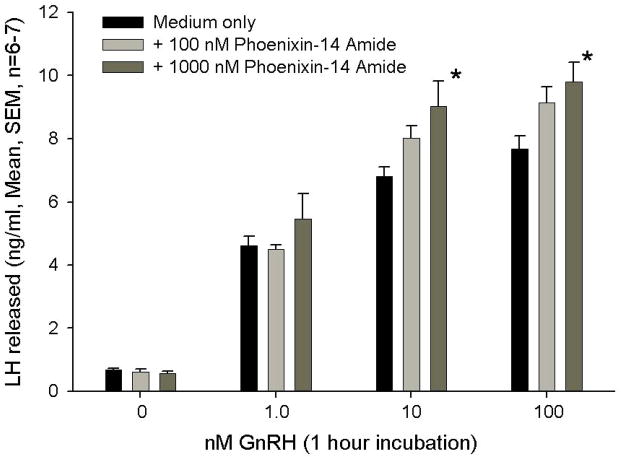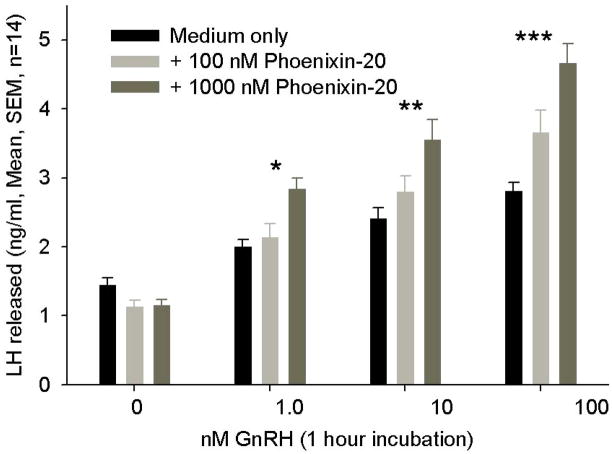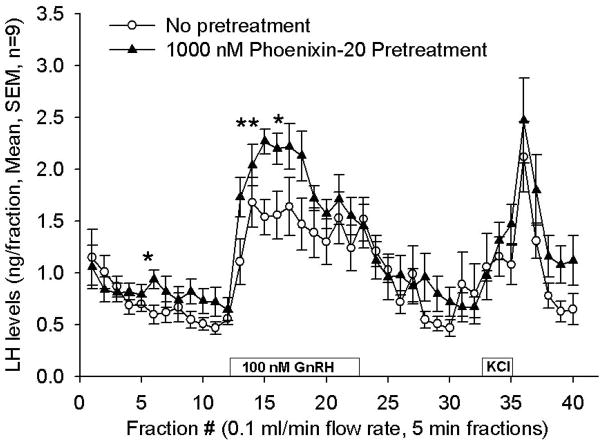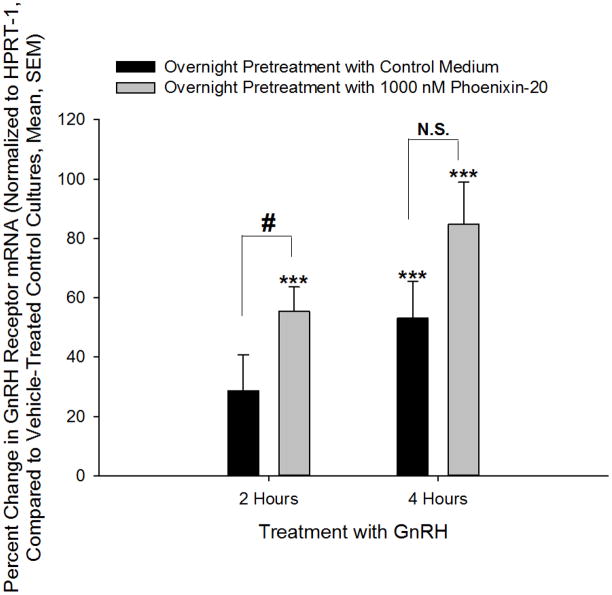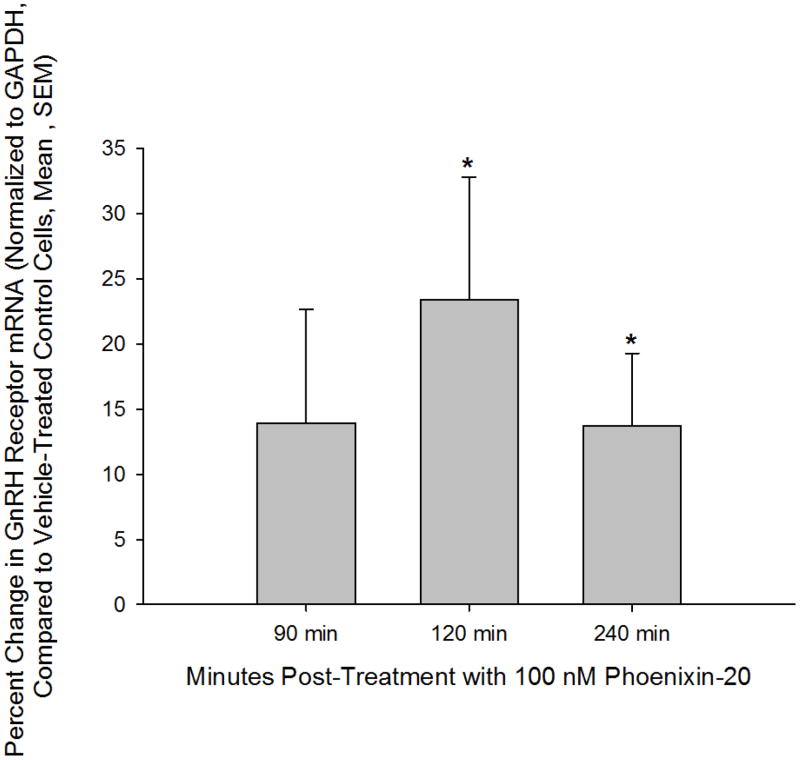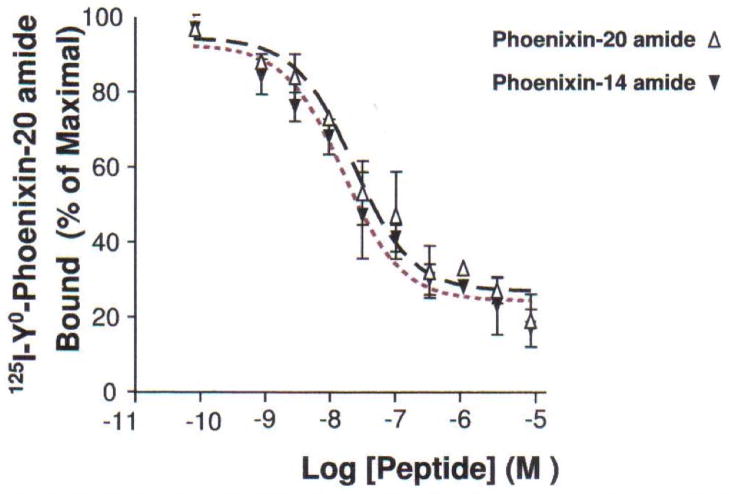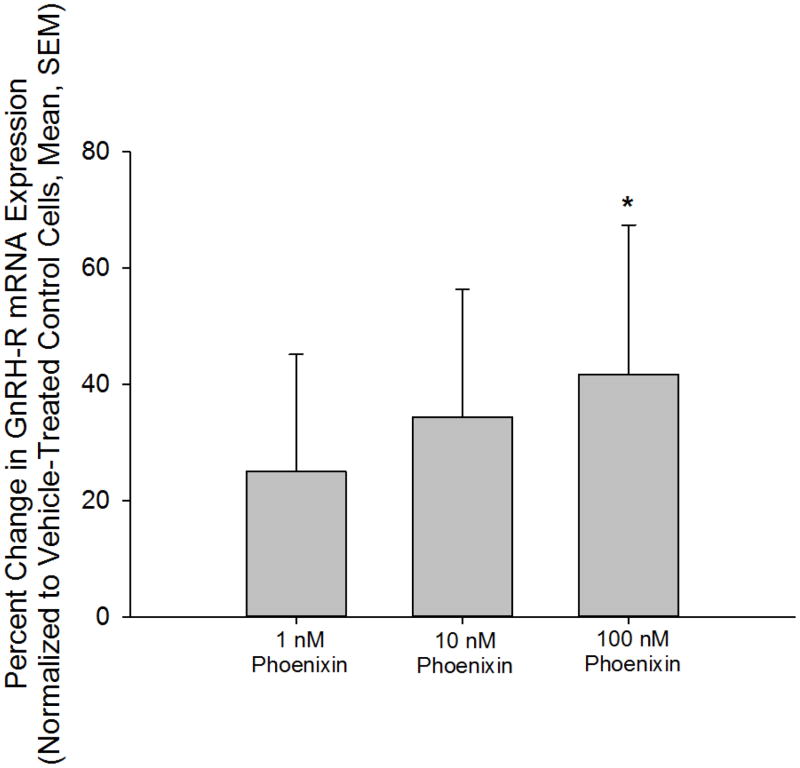Figure 3. Phoenixin regulates pituitary gonadotropin secretion by modulating expression of the GnRH receptor.
Anterior pituitary cell cultures from random cycle female rats were incubated overnight with either phoenixin-14 (A) or phoenixin-20 (B), and then exposed to GnRH for one hour. Both phoenixin-14 and -20 potentiated GnRH-stimulated LH release (A and B). To evaluate the time course of the effect of phoenixin on LH release, female anterior pituitary cells were incubated with either vehicle or 1000nM phoenixin-20 for 24 hours prior to loading onto BioGel P-2 columns and exposure to the perifusate media alone (Fractions 0–10), media containing 10 nM GnRH (Fractions 11–25), and media containing 60 mM KCl (Fractions 30–40) (C). Pretreatment with phoenixin enhanced GnRH-stimulated LH release. Overnight pretreatment with phoenixin-20 also potentiated the ability of GnRH to upregulate the expression GnRH receptor in dispersed male anterior pituitary cell cultures (D). In the immortalised mouse pituitary gonadotroph cell line, alphaT3-1, treatment with phoenixin-20 increased GnRH receptor mRNA (E), as determined by RT-PCR. Phoenixin-20 and phoenixin-14 bound with similar affinity to pituitary adenoma cell membrane preparations (F). In primary pituitary cell cultures collected from female donors, phoenixin, in the absence of GnRH, significantly increased GnRH receptor expression (G). *p<0.05, **p<0.01, ***p<0.001 versus non-pretreated control cells (A and B) or vehicle treated cells (C, D, E, and G). #p<0.05 vs. control-pretreated, GnRH-treated cultures (D). For A and B, a one-way ANOVA was utilised, and data in C, D, E, and G was analyzed using a t test.

